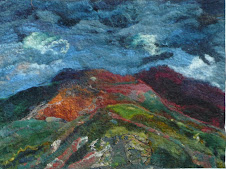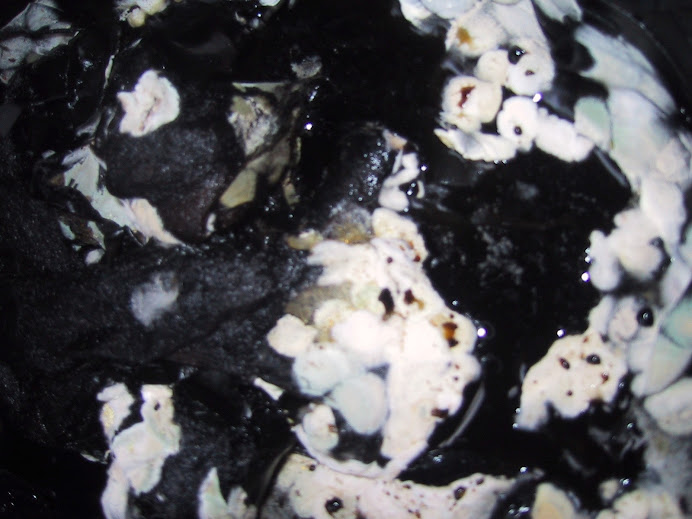Wild Flower Bounty
-
On a short hike today, there were lots of wild flowers. This particular
trail looks different in every season, and different with whatever trail or
p...
2 weeks ago
This is both about growing colour quite literally as plants in my garden and also about using them. I dye fibres with natural dyes and use them to "paint" with. This is how I make my landscapes , mostly of the North Wales countryside Mae Tyfu Lliw yn enw addas iawn i'r 'blog' yma. Yr wyf yn cael hwyl yn tyfu bob math o flodau i Helen i'w defnyddio. Mae hi yn creu lluniau bendigedig, mae y lliwiau yn hollol naturiol, ac felly'n gweithio'n dda iawn yn rhoi lliw credadwy o'r wlad o'm cwmpas





 I got this book and some of the persimmon powder today from Chris Conrad who has been researching into this traditional Japanese dye for a few years. I have been corresponding with Chris for a couple of weeks after a discussion came up on the Natural Dyes Online on dyeing with persimmon . The persimmon is fermented so this dye fits into the research I am doing into fermented dyes but as someone who paints on paper with dyes Iam also interested in this as it is used to coat paper too. I have only skimmed the book as yet but it is a highly professionl production that I am really looking forward to reading. I love books like this. More later.
I got this book and some of the persimmon powder today from Chris Conrad who has been researching into this traditional Japanese dye for a few years. I have been corresponding with Chris for a couple of weeks after a discussion came up on the Natural Dyes Online on dyeing with persimmon . The persimmon is fermented so this dye fits into the research I am doing into fermented dyes but as someone who paints on paper with dyes Iam also interested in this as it is used to coat paper too. I have only skimmed the book as yet but it is a highly professionl production that I am really looking forward to reading. I love books like this. More later.



